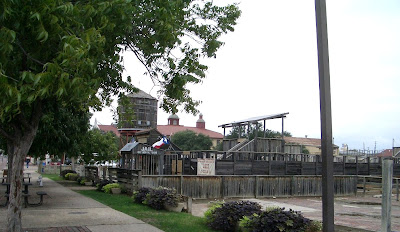
Bill Neeley, author of the book The Last Comanche Chief: The Life and Times of Quanah Parker, writes: "Not only did Parker pass within the span of a single lifetime from a Stone Age warrior to a statesman in the age of the Industrial Revolution, but he never lost a battle to the white man and he also accepted the challenge and responsibility of leading the whole Comanche tribe on the difficult road toward their new existence." Quanah Parker was a fascinating man. He was the son of Comanche chief Peta Nocona and a European American woman, Cynthia Ann Parker. After the last of the Comanche's led by Parker surrendered in 1875 and moved to a reservation in southwestern Oklahoma, Parker embraced much of white culture, except for monogamy and traditional Protestant Christianity. He was well respected by whites and through wise investments, he became the wealthiest American Indian of his day. He went on hunting trips with President Theodore Roosevelt, had five wives and twenty five children and founded the Native American Church. Click on his name above for more information.

Billy Bob's Texas, the world's largest honky tonk, has 127,000 square feet of space (nearly 3 acres) inside and 20 acres of parking. The building now known as Billy Bob's was built in 1910 as an open air cattle barn - it now provides fun for 6000+ people with a concert stage, dance floor, restaurant, arcade, casino, live bull riding arena and more.
Stockyards Station below, located in the heart of the Stockyards Historic District, provides over 100,000 square feet of shopping, dining, western entertainment, festivals and other special events. 














Texas Trail of Fame Plaques
There are dozens of plaques in the sidewalks throughout the Stockyards honoring western actors, singers, cowboys, lawmen, pioneers, politicians, heroes, artists and other personalities.

Amon Carter deserves special attention. He did more than any other person to create the image we have of Fort Worth. He was the creator and publisher of the Fort Worth Star-Telegram and a nationally known civic booster for Fort Worth. A legacy in his will was used to create Fort Worth's famed Amon Carter Museum. The newspaper created WBAP, the first radio station in Fort Worth, in 1922; and followed it with Texas' first television station, WBAP-TV, in 1948. This near-monopoly on news in such a large service area gave Carter, the Star-Telegram publisher and two-thirds owner, the money and power to become a major political force in both Fort Worth and Texas. Carter parlayed this money and power into celebrity as a national spokesman for Fort Worth and West Texas (Carter popularized the description of Fort Worth as "Where the West Begins"). During the 1920s and 1930s, Carter personified the image of the Texas cowboy in the national mind: an uninhibited story-teller, gambler, and drinker, generous with his money and quick to draw his six-shooters. Major magazines such as Time and the Saturday Evening Post ran profiles of Carter, and he counted Will Rogers and Walter Winchell among his friends. The well-publicized hospitality of his Shady Oak Farm near Lake Worth was open to any major celebrity or businessman passing through Fort Worth. Carter used his national stage to drum up business and government spending for his home region. From the Texas state legislature, he got a four-year college (now Texas Tech University) for Lubbock. He persuaded Southern Air Transport (now American Airlines) to move its headquarters from Dallas to Fort Worth. Several oil companies moved or kept their headquarters in Fort Worth after personal interventions by Carter. Carter's disdain for Dallas, Fort Worth's larger and richer neighbor, was legendary in Texas.








Dining
Joe T. Garcias is a highly regarded Mexican restaurant located at 2201 Commerce Street less than five minutes from the Stockyards. I had their delicious Chile Rellanos for lunch. Their tortillas are also very good with a strong corn flavor. Jeff – thanks for the recommendation. If you come to the Stockyards don't miss this restaurant.







































6 comments:
This is a really informative knowledge, Thanks for posting this informative Information. Fort worth stockyards
supreme new york
golden goose
kd12
cheap jordans
moncler
balenciaga speed
supreme hoodie
adidas yeezy
yeezy
yeezy shoes
longchamp bags
jordan shoes
yeezys
off white shoes
canada goose outlet
longchamp
adidas yeezy
kenzo clothing
yeezy sneakers
100% real jordans for cheap
useful referenceMore Info navigate to this websitenext page this contact formvisit their website
nike sb dunk high
palm angels
bape
paul george
jordan outlet
off white
palm angels
jordan retro
off white
jordan outlet
faansii7645
golden goose outlet
golden goose outlet
golden goose outlet
golden goose outlet
golden goose outlet
golden goose outlet
golden goose outlet
golden goose outlet
golden goose outlet
golden goose outlet
Post a Comment